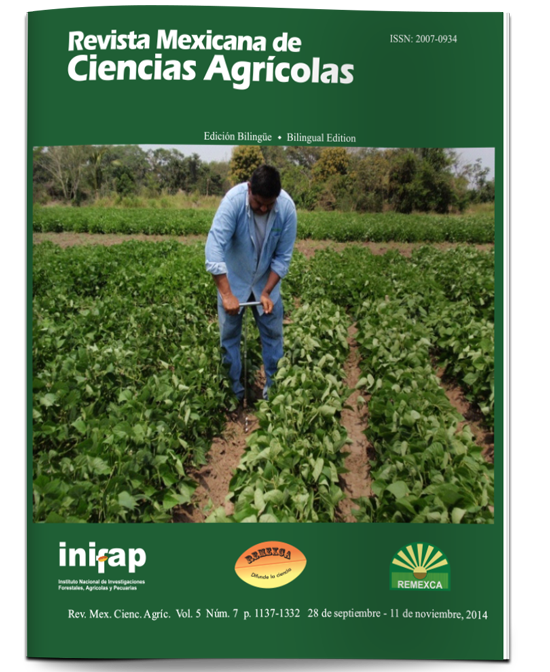Areas of potential abundance of Diaphorina citri (Hemiptera: Liviidae), vector of the citrus greening disease in Mexico)
DOI:
https://doi.org/10.29312/remexca.v5i7.836Keywords:
citrus greening disease, geographic information systems, interpolation, riskAbstract
The presence of the citrus greening disease (HLB) and its vector: Diaphorina citri Kuwayama (Hemiptera: Liviidae) in Mexico, coupled with the large spread of the citrus industry, impede the detection, control and management. In order to generate tools that facilitate the implementation of strategies to confront the problems associated with HLB and its vector, this study was developed with the goal of implementing a practical and easy way to use a methodology for classifying the presence and potential of vector abundance and generate a map, showing the delineation of potential risk areas within the country. Three indices were modeled, two temperature-based (index of potential generations, IGP, and days with favorable conditions, IDCF), and another one on the availability of the host (citrus plantings, ISPC). On the final map, each index was weighted with respect to its maximum, interpolated using the inverse distance optimized method and averaged with others for the Egalitarian Risk Index (IRPM). We found that, the municipalities with the highest IDCF were Tuzantán, Chiapas, and Atoyac de Álvarez, Guerrero. Concerning IGP, the municipalities of Rosario, Sonora, and Pichucalco, Chiapas, presented 34 and 28 potential generations per year respectively. The maximum risk, IRPM, was found in the municipalities of Alamo Temapache, Martínez de la Torre, and Papantla, Veracruz, and Atoyac de Álvarez, Guerrero. The proposed method is practical, cheap and without complicated calculations; for improving it, it would be necessary to incorporate information regarding relative humidity, rainfall, phenology and species of citrus. Its usefulness lies by helping for decision making about actions for detection, monitoring, sampling and vector control.
Downloads
Downloads
Published
How to Cite
Issue
Section
License
The authors who publish in Revista Mexicana de Ciencias Agrícolas accept the following conditions:
In accordance with copyright laws, Revista Mexicana de Ciencias Agrícolas recognizes and respects the authors’ moral right and ownership of property rights which will be transferred to the journal for dissemination in open access. Invariably, all the authors have to sign a letter of transfer of property rights and of originality of the article to Instituto Nacional de Investigaciones Forestales, Agrícolas y Pecuarias (INIFAP) [National Institute of Forestry, Agricultural and Livestock Research]. The author(s) must pay a fee for the reception of articles before proceeding to editorial review.
All the texts published by Revista Mexicana de Ciencias Agrícolas —with no exception— are distributed under a Creative Commons License Attribution-NonCommercial 4.0 International (CC BY-NC 4.0), which allows third parties to use the publication as long as the work’s authorship and its first publication in this journal are mentioned.
The author(s) can enter into independent and additional contractual agreements for the nonexclusive distribution of the version of the article published in Revista Mexicana de Ciencias Agrícolas (for example include it into an institutional repository or publish it in a book) as long as it is clearly and explicitly indicated that the work was published for the first time in Revista Mexicana de Ciencias Agrícolas.
For all the above, the authors shall send the Letter-transfer of Property Rights for the first publication duly filled in and signed by the author(s). This form must be sent as a PDF file to: revista_atm@yahoo.com.mx; cienciasagricola@inifap.gob.mx; remexca2017@gmail.
This work is licensed under a Creative Commons Attribution-Noncommercial 4.0 International license.



